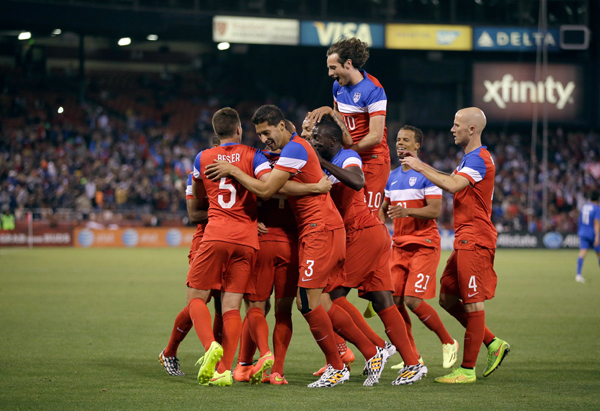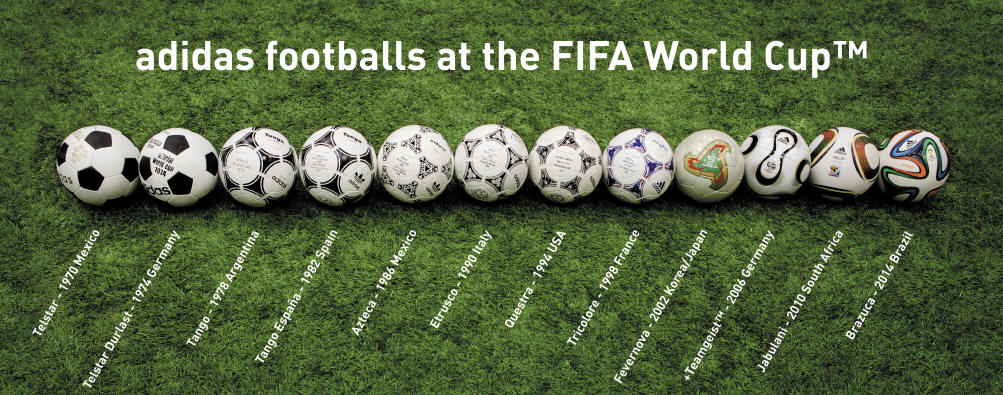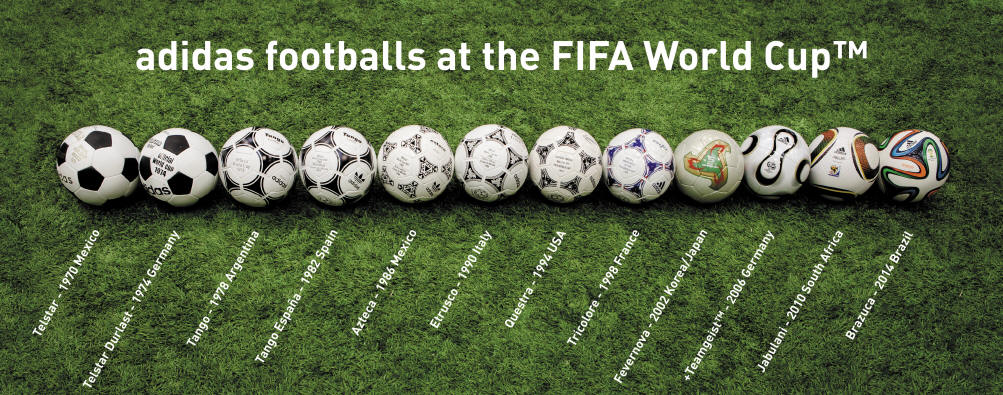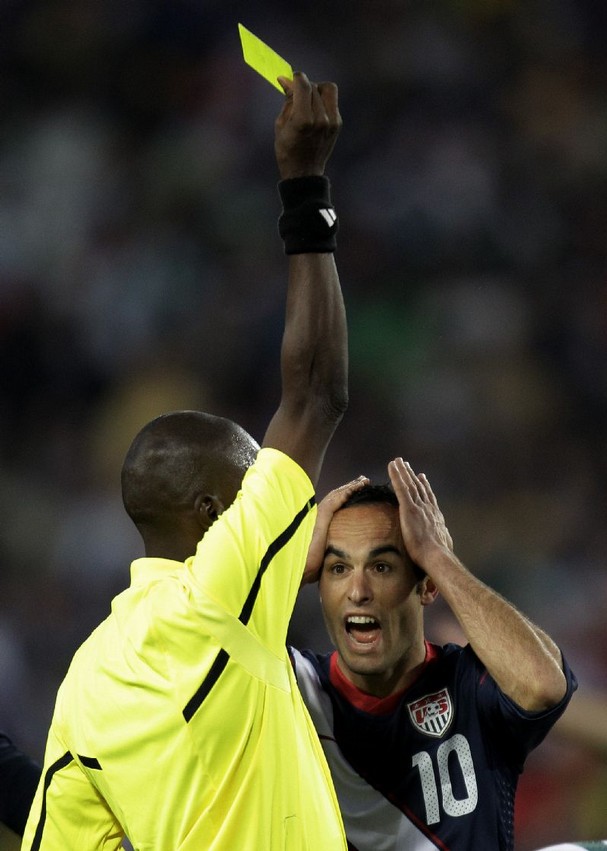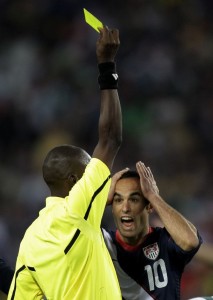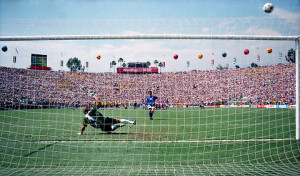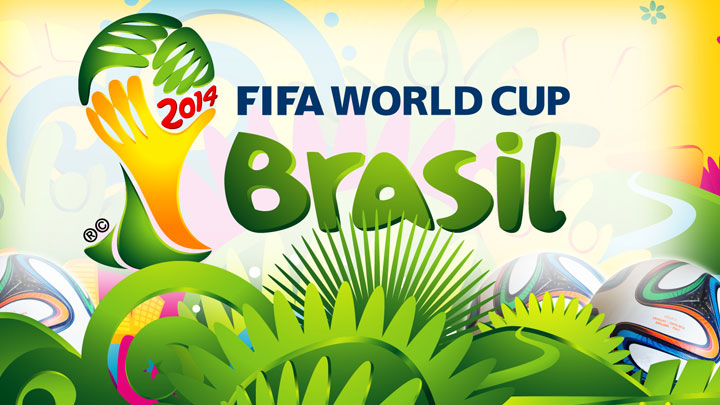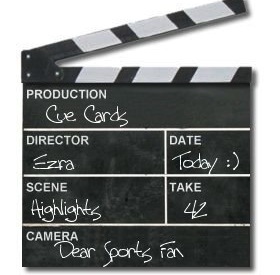To celebrate and prepare for the World Cup in Brazil, Dear Sports Fan is publishing a set of posts explaining elements of soccer. We hope you enjoy posts like Why do People Like Soccer? How Does the World Cup Work? Why Do Soccer Players Dive so Much? What is a Penalty Kick in Soccer? What are Red and Yellow Cards in Soccer? and Why do World Cup Soccer Players Blame the Ball? The 2014 World Cup in Brazil begins on June 12 and ends on July 13.
— — —
The United States Men’s National soccer team plays their first game of the 2014 World Cup on Monday June 16 at 6:00 pm ET against Ghana. It will be televised live from Estadio das Dunas in Natal, Brazil on ESPN. If you are not a normal soccer junkie, this is one of the handful of games over the next four years that you might really enjoy watching. Here’s some suggestions to wring out the most enjoyment possible from it.
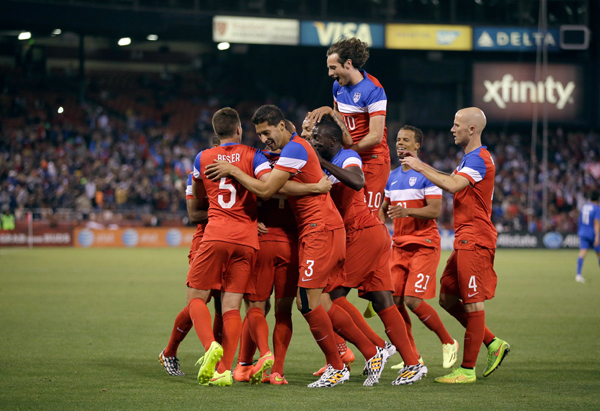 Know the Stakes:
Know the Stakes:
This is the first game of the World Cup for the United States but the stakes are already extremely high. As we covered in our How Does the World Cup Work? post, the opening two weeks of the tournament are the group stage. This is a round-robin tournament in groups of four teams with only the top two advancing to the knockout round, a single elimination bracket of sixteen teams. The United States got very unlucky and was placed in what is widely being called the “Group of Death” because it collectively has the toughest teams. The United States will play Ghana and then Portugal and then Germany. It’s a rule of thumb that to have a chance of advancing, a team should aim for at least four points (three for a win, one for a tie, zero for a loss.) Of the three teams, Ghana is thought to be the weakest. FIFA (soccer’s unthinkably corrupt governing body) ranks Ghana 37th, Portugal 4th, and Germany 2nd. The United States is 13th. I know it’s only the first game of the tournament for the US team but if they are going to advance, they almost definitely need to win the game against Ghana.
Know the Characters:
Soccer is a beautiful game to watch but even its strongest proponents will admit that for people who are not used to watching it, it can drag at times. One approach is to appreciate soccer through the sheer sex appeal of its players. A complementary approach is to get into the plot of the game. Here are some of the characters:
Clint Dempsey
The captain of the US team, Clint Dempsey is also the heart and soul of the team. He’s a fiery dude whose brash, untraditional style has an air of the avant-garde to it if the avant-garde was as likely to punch you in the face as produce artwork. He also has an appealing Olympic-personal-interest type back-story that confirms American stereotypes about soccer so its bound to get a lot of airplay. Dempsey grew up in a trailer in Nacogdoches, Texas, playing soccer with primarily kids (and adults) of hispanic decent. He cut his teeth playing in adult offshoot of the Mexican professional league when he was a fourteen year-old. According to this great Sports Illustrated article, he would infuriate the adults with his skill and attitude and then had to handle them trying to injure him. He played at Furman University and then the New England Revolution in the US professional league, the MLS, before heading to the English Premiere league where he played for Fulham and later Tottenham. Dempsey became widely known as the best American non-goalie to ever play in the EPL before coming back to the US to play for Seattle last year. He’s 31 now which is a little past prime for a soccer player but he’s still clever and ferocious and capable of creating some magical moments for the US team.
Michael Bradley
If Dempsey is the heart and soul of the team, Michael Bradley is the engine. He plays tirelessly at the center of the field for the US team. He starts the attack by distributing the ball up the field and he’s essential to defense, pressuring the best playmaker on the other team and tackling with precision and strength. If Dempsey’s background and style confirm the stereotype of the fiery latin influence, Bradley confirms the stereotype of the overly intense passion that white America is said to approach soccer with. I can’t find the article now (please send me a link if you know it) but I recently read an article about Bradley getting into a physical fight with his father following a national team game a few years ago. Oh, and his father was the coach of the national team when it happened. That’s right, Michael’s father, Bob Bradley was the US coach from 2006 to 2011, so Michael is used to being in the spotlight. Now he’s his own man and widely thought to be the best player on the team.
Jurgen Klinsmann
When Bob Bradley was fired in 2011, the United States soccer leaders turned to Jurgen Klinsmann to take over. Klinsmann is a former star of the German National team. He was a great goal scorer who helped lead the Germans to a World Cup victory in 1990. He later coached the German team in the 2006 World Cup and was criticized during the lead-up to the tournament because he “commuted to Germany from the United States.” That’s right, the German born Klinsmann has lived in California for years and loves it there. Klinsmann is known for his offensive soccer tactics and he’s clearly not worried about coming off as offensive in other ways too. He made news in the months preceding this World Cup by leaving Landon Donovan, the last team captain and the most well known American player of the last decade, off the team and by blithely telling the media that the United States “cannot win this World Cup because we are not at that level yet.”
Landon Donovan
That’s right, the player who Klinsmann left chose not to bring to Brazil is there anyway, at least his presence will be. Donovan, who is still playing in the MLS, was quickly snapped up by ESPN as a World Cup analyst. If the United States team does well, the story will be Klinsmann’s brilliant choice to move on from Donovan. If the team doesn’t do well, Donovan will be even more front and center because the story will certainly be about how his absence hurt the team.
The Weather
I’ll let my Dad’s favorite media organization, The Weather Channel, handle this one:
Torrential rains have plagued the site of the opener, Natal—a coastal city of nearly 1 million people in northeastern Brazil—for three days, inundating streets, blocking off roads and triggering a landslide that destroyed at least two homes and forced the evacuations of at least 50 others.
The rain is expected to continue through the game on Monday.
The Game
Okay, after all that, there’s a game to watch. Find yourself a good bar and some Soccer fans to cheer with. If you want to pick up more information about “How to Watch the World Cup Like a True Soccer Nerd” then this wonderful Grantland article is for you. Enjoy!

